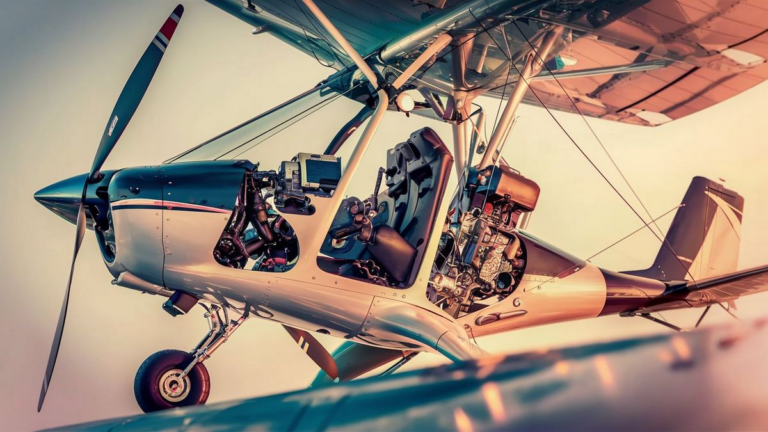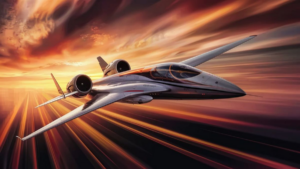Ultralight aircraft, often referred to simply as “ultralights,” represent a fascinating niche within the realm of aviation. These aircraft are characterized by their lightweight construction, simple design, and often open cockpit. In this guide, we’ll delve into what exactly constitutes an ultralight aircraft, their history, design principles, regulations governing their operation, and the appeal they hold for aviation enthusiasts.
What Defines an Ultralight Aircraft?
At its core, an ultralight aircraft is defined by its weight, speed, and capacity. In the United States, for instance, the Federal Aviation Administration (FAA) categorizes ultralights as vehicles that weigh 254 pounds or less, excluding floats and safety devices such as parachutes. They are also limited to carrying a single occupant and no more than 5 gallons of fuel.
Ultralights typically feature a simple construction, often utilizing lightweight materials such as aluminum tubing, fabric, or composite materials. Many designs incorporate a high-wing configuration, providing stability and ease of control.
The History of Ultralight Aircraft
The concept of ultralight aviation traces back to the early 20th century, with pioneers such as Otto Lilienthal and the Wright brothers laying the groundwork for powered flight. However, it wasn’t until the latter half of the century that ultralights as we know them began to take shape.
In the 1970s and 1980s, advancements in materials and engine technology led to a surge in ultralight aircraft development. These lightweight, affordable aircraft captured the imagination of aviation enthusiasts worldwide, spawning a vibrant community of pilots and builders.
Design Principles
Ultralight aircraft are designed with simplicity and efficiency in mind. Engineers strive to minimize weight while maintaining structural integrity and aerodynamic performance. This often involves utilizing streamlined shapes, lightweight materials, and innovative construction techniques.
Furthermore, ultralight designs prioritize ease of assembly and maintenance, allowing owners to take a hands-on approach to their aircraft.
Regulations and Safety
Due to their lightweight and minimalistic nature, ultralight aircraft are subject to specific regulations governing their operation. In the United States, for example, pilots must adhere to Part 103 of the FAA regulations, which outlines requirements for ultralight vehicles.
These regulations cover aspects such as pilot certification, aircraft registration, operational limitations, and equipment requirements. Additionally, pilots are encouraged to undergo thorough training to ensure safe operation of their ultralight aircraft.
The Appeal of Ultralight Aviation
Ultralight aviation offers a unique blend of freedom, adventure, and camaraderie that appeals to a wide range of individuals. Whether it’s the thrill of soaring through the skies or the satisfaction of building and piloting your own aircraft, ultralights hold a special allure for aviation enthusiasts.
Furthermore, the relatively low cost of entry compared to traditional aircraft makes ultralight aviation accessible to a broader audience, fostering a vibrant and inclusive community of pilots and enthusiasts.
In Conclusion
Ultralight aircraft represent a fascinating intersection of innovation, engineering, and passion for flight. From their humble beginnings to their modern-day popularity, these lightweight aircraft continue to captivate aviators around the world. Whether you’re a seasoned pilot or an aspiring enthusiast, exploring the world of ultralight aviation is sure to be an exhilarating journey.
Environmental Impact
One of the often overlooked aspects of ultralight aircraft is their relatively low environmental impact compared to larger, conventional aircraft. Due to their smaller size and reduced fuel consumption, ultralights produce fewer emissions and have a smaller carbon footprint per flight hour.
Additionally, the use of lightweight materials in their construction contributes to lower resource consumption during manufacturing, further reducing their environmental footprint.
Advantages of Ultralight Aircraft
- Enhanced maneuverability: Ultralights often have superior maneuverability compared to larger aircraft, allowing pilots to perform agile maneuvers and enjoy a more dynamic flying experience.
- Lower operating costs: With their minimal fuel consumption and simplified maintenance requirements, ultralight aircraft generally have lower operating costs compared to traditional aircraft, making flying more accessible to enthusiasts.
- Exploration of remote areas: The lightweight and compact nature of ultralight aircraft make them ideal for exploring remote or hard-to-reach areas, providing pilots with opportunities for adventure and discovery.
Frequently Asked Questions
1. Can anyone fly an ultralight aircraft?
While flying ultralight aircraft typically requires less extensive training and certification compared to piloting larger aircraft, it’s still essential for individuals to undergo proper instruction and familiarize themselves with safety protocols before taking to the skies.
2. Are ultralight aircraft safe?
When operated within their design limitations and in accordance with regulations, ultralight aircraft can be flown safely. However, as with any form of aviation, there are inherent risks involved, and pilots should prioritize safety at all times.
| Comparison | Ultralight Aircraft | Conventional Aircraft |
|---|---|---|
| Cost | Lower operating costs | Higher operating costs |
| Environmental Impact | Reduced emissions and carbon footprint | Higher emissions and larger carbon footprint |
| Maneuverability | Enhanced maneuverability | Less maneuverable |
See also:






